The term “opioids” describes a category of drugs that includes both naturally occurring and synthetic derivatives of the opium poppy plant. Opioids, which are also commonly referred to as opiates (and sometimes as narcotics) are used both in legitimate medical situations and for illicit recreational purposes.
Understanding Opioids
Learn about opioids and substance abuse
Opioids are most commonly employed by medical personnel for their painkilling properties. Common opioids that are used by physicians or prescribed for patient use include codeine, oxycodone, hydrocodone, morphine, and fentanyl. Morphine is most commonly used in hospitals. Fentanyl is a particularly powerful medication that is used to treat breakthrough pain that cannot be controlled by morphine. Oxycodone is the active ingredient in OxyContin, which is one of the most commonly prescribed painkillers. Hydrocodone is present in Vicodin, which is another frequently prescribed painkiller.
Because opioids have such powerful properties, and because, especially in the case of prescription versions, they are readily accessible, these drugs are also popular among recreational drug users. Heroin was once the most commonly abused opioid but, in recent years, the abuse of prescription opiates has skyrocketed. Thankfully, there are a number of treatment options for opioid abuse available that can help individuals struggling with this addiction.
Statistics
Opioid addiction statistics
Opioid abuse is a significant problem in the United States and other parts of the world. Experts estimate that, worldwide, as many as 36 million people engage in opioid abuse every year. In the United States, as many as 20 million Americans have abused opioids, and more than 2 million are currently struggling with an opioid-related addiction. According to information collected during the annual National Survey on Drug Use and Health (NS-DUH), about 650,000 Americans abused heroin at least once during the 12 months prior to taking the survey.
Nearly one in five people who enter a drug rehab program in the United States do so because of problems related to opioid abuse, and statistics suggest that opioids are involved in nearly 80% of drug-related deaths. More than half of all individuals who were arrested for violent crimes in the United States were under the influence of an opioid when they were taken into custody.
Causes and Risk Factors
Causes and risk factors for opioid addiction
The development of an opioid abuse problem or an addiction to heroin or another opioid can be caused by several genetic and environmental risk factors. These include the following:
Genetic: Family history of substance abuse and addiction significantly raises the likelihood that a person will have a problem with chemical dependency. Several studies of families, including research focused on adopted children and twins, indicated that substance abuse and addiction among close relatives, such as parents or siblings, makes it much more likely that a person will have a similar problem.
Environmental: Substance abuse within one’s family can also have an environmental influence on opioid abuse and addiction. Children who grow up with parents or siblings who openly abuse drugs, or who associate with people who do, have a greater risk of drug abuse than children who have neither exposure nor access to illicit recreational substances. Also, growing up in neighborhood or communities where drug use is prevalent can increase a person’s risk of also abusing drugs, as can having close friends who are involved with illicit substance abuse.
Risk Factors:
- Severe injury that requires treatment with prescription opioids
- Chronic pain
- Family history of opioid abuse
- Family history of mental illness
- Personal history of mental illness
- Personal history of another substance use disorder
- Personal history of child abuse and/or domestic violence
- Trauma
- Socioeconomic pressure
- Peer pressure
Signs and Symptoms
Signs and symptoms of opioid addiction
The signs and symptoms of opioid abuse can depend upon a number of factors, including the specific drug being abused, the amount of time the person has been abusing that drug, and the severity of the abuse. Individuals who exhibit many of the following symptoms may be abusing opioids:
Behavioral symptoms:
- Unexplained absences from work
- Unexplained decline in performance at work
- Withdrawal from friends and family members
- Association with a new peer group
- Lying about one’s whereabouts and engaging in other deceptive acts
- Asking to borrow money or being suspected of stealing from friends or family members
Physical symptoms:
- Dramatic change in appearance (including clothing, weight, and personal hygiene)
- Delayed reflexes
- Apparent numbness to physical pain
- Nausea
- Diarrhea
- Impaired motor skills
- Poor coordination
- Shallow breathing and slowed heart rate
- Dilated pupils
- Itchiness
- Excessive yawning
- Unexplained rashes
Cognitive symptoms:
- Inability to plan
- Poor spatial relations
- Memory problems
- Lack of concentration or focus
- Impaired problem-solving skills
Psychosocial symptoms:
- Dramatic mood swings, including a tendency to quickly become angry
- Panic
- Anxiety
- Depression
- Paranoia
- Confusion
- Unprovoked anger
- Obsession with drugs
Co-Occurring Disorders
Opioid addiction and co-occurring disorders
Opioid abuse and addiction can often co-occur with one or more additional mental health conditions. Examples of disorders that commonly co-occur with opioid addiction can include the following:
- Anxiety disorders
- Depressive disorders
- Other substance use disorders
- Bipolar disorder
- Oppositional defiant disorder (ODD)
- Posttraumatic stress disorder (PTSD)
Effects of Withdrawal and Overdose
Effects of opioid withdrawal: When individuals who are addicted to opioids are incapable of getting more of the drug, severely unpleasant withdrawal symptoms can set in within hours. Examples of such symptoms may include the following:
- Nausea
- Diarrhea
- Vomiting
- Cramping
- Watery eyes
- Runny nose
- Shakiness and muscle spasms
- Intense drug cravings
- Lack of appetite
- Heavy sweating
- Insomnia
Effects of opioid overdose: Opioid overdose is an unfortunately common (and potentially fatal) experience for people who are abusing this drug for recreational or non-supervised medical purposes. The following are common signs that a person has overdosed and is in need of immediate emergency medical care:
- Slowed heartbeat
- Shallow breathing
- Inability to respond to external stimuli
- Seizure
- Constricted pupils
- Clammy skin
- Bluish tint to lips and fingernails
Effects
Effects of opioid addiction
Opioid abuse can wreak significant damage on a person’s physical, emotional, and social well-being in both the short and long term. Common effects of opioid abuse and addiction include the following:
- Shame and guilt
- Self-hatred
- Thoughts of suicide
- Suicide attempts
- Problems with personal relationships
- Social withdrawal to the point of isolation
- Academic failure
- Poor performance on the job
- Sexual dysfunction
- Vision problems
- Cardiovascular impairments



